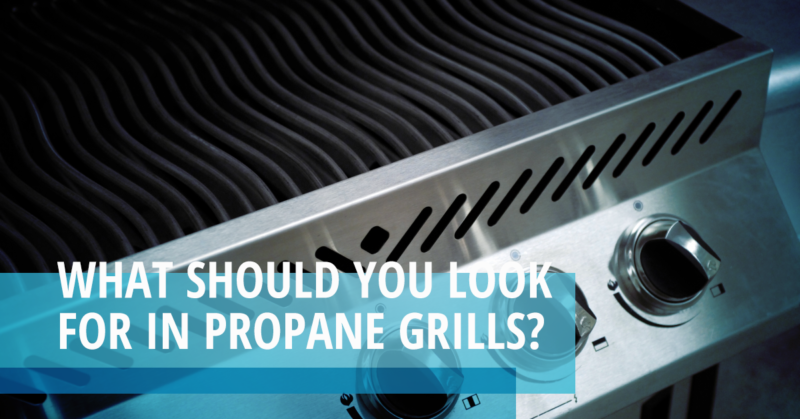Propane or Gas Grills?
In our humble opinion, propane-powered grills are the way to go. If you purchase a gas grill, you will have to have it hooked up to a gas line that you have had installed. The problem is that many people do not have natural gas service or a gas line readily available, which makes propane the perfect alternative. When you buy a propane-powered grill, all you need is a tank of propane, which is easy to find. Not only that, propane also burns at higher temperatures than natural gas, which is important for a true grilling enthusiast. In order to obtain that perfect amount of char to your steaks, you need for your grill to burn at high temperatures.
BTUs
BTUs, or British Thermal Units, are something else that you need to consider when shopping for grills. You might assume that grills with the highest BTUs are the hottest, but that simply isn’t always the case. Grill enthusiasts recommend that you compare the amount of BTUs to the size of the cooking surface. The ideal amount of BTUs are about 80-100 BTUs per square inch of your cooking surface. The higher amount of BTUs that you have, the faster that you will burn up your fuel. Therefore, you want to purchase a grill with just the right amount of BTUs.
Grate
When shopping for a grill, you also want to consider the weight of the grate and what types of materials were used to make the grill. Another important factor to consider is how tightly the lid fits. The ideal grill features a heavier construction and tight-fitting lid to capture and retain heat. If you have a grill that fits this description, then you won’t need a grill with more than 80-100 BTUs per square inch of cooking space.
How Many Gas Burners?
The more gas burners that you have, the larger the variety of different foods that you can cook on your grill. Having more than one gas burner allows you to cook at more than one different heat level. For instance, you’ll need a different temperature to cook your steaks than you would to roast some peppers. Most gas grills have three gas burners, which might be enough for you. However, some grills include as many as six burners for those of you who are cooking a wide variety of different foods. Â
What About Side Burners?
Just how hardcore are you about your barbecuing? Side burners are typically used for heating up sauces and side dishes, but controlling the temperature on side burners is difficult. If your grill will be located close to your kitchen, then a side burner may be more trouble than it’s worth. However, if you hate making those extra trips to the kitchen for side dishes and sauces, then a side burner might be a great option for you.
What About A Rotisserie?
You may not necessarily need a rotisserie, but the results you yield from rotisseries can be truly delicious. Meat enthusiasts love when meats have been slow-cooked in rotisseries because they turn out juicier with a crispy outside. If you decide to purchase a rotisserie, look for a strong, sturdy one with a decent motor.
Ooh, all this talk of grilling makes us want to get started right away! As warmer temperatures are approaching, you want to make sure that you find the perfect grill to bring out your inner chef. Propane grills make the perfect grill for all your needs, and DiSanto Propane is happy to provide you with all of your propane services in New York.


